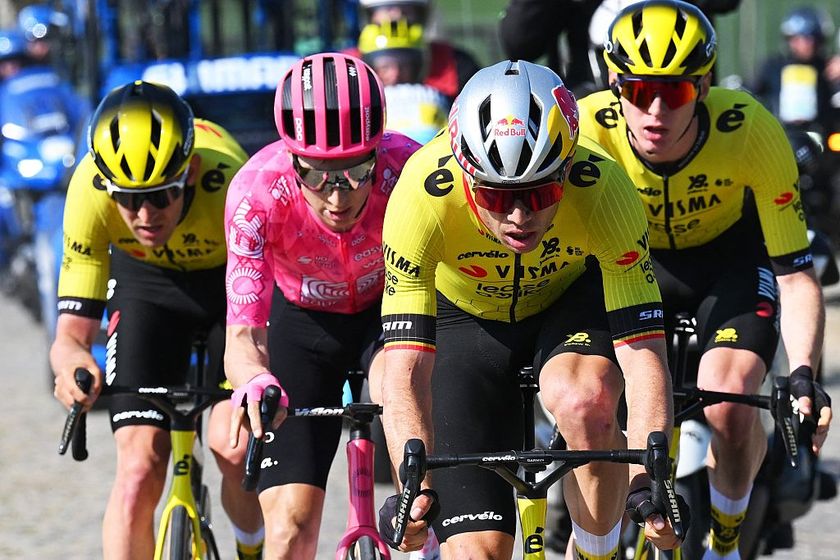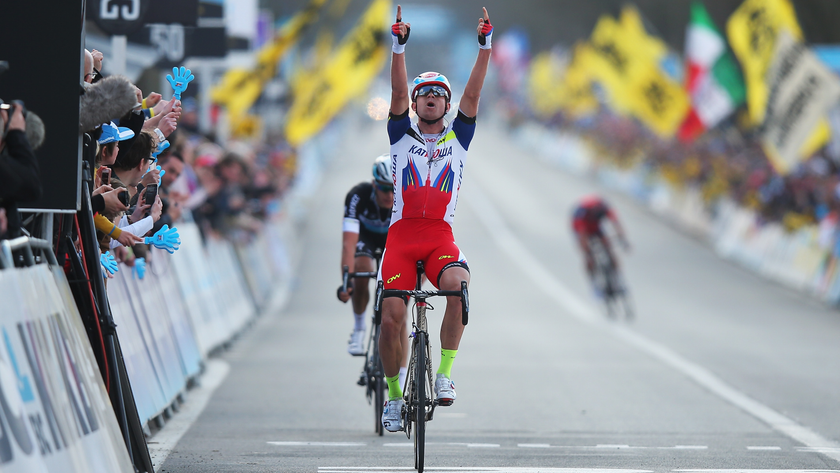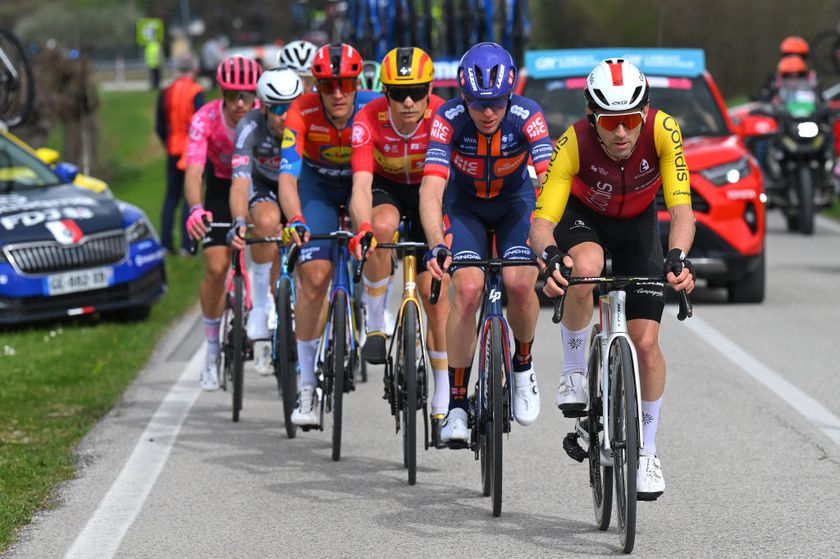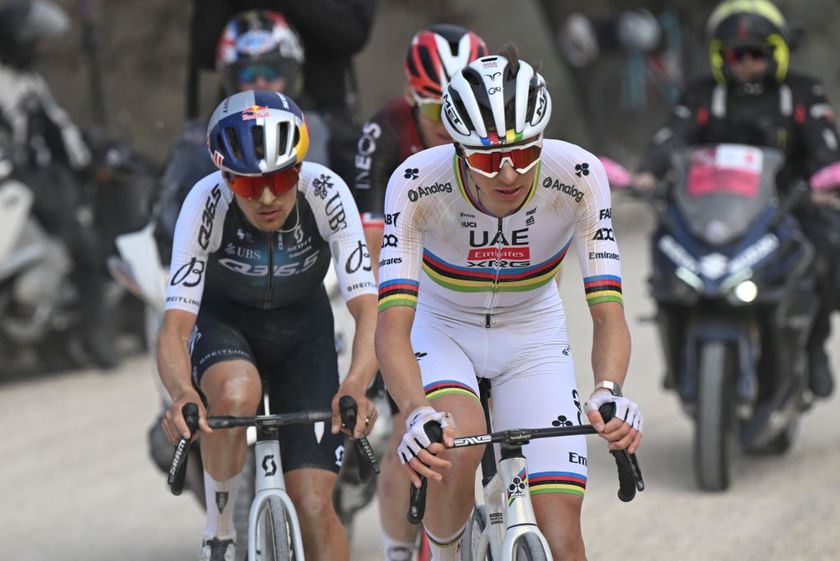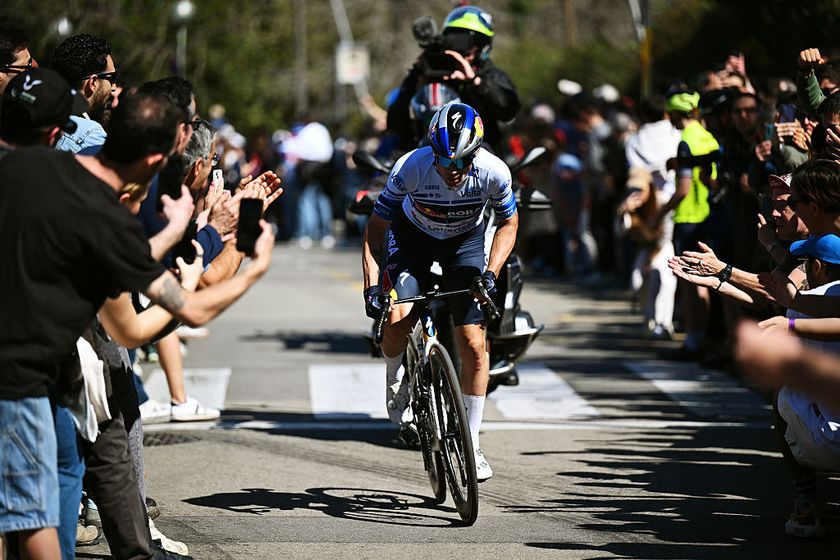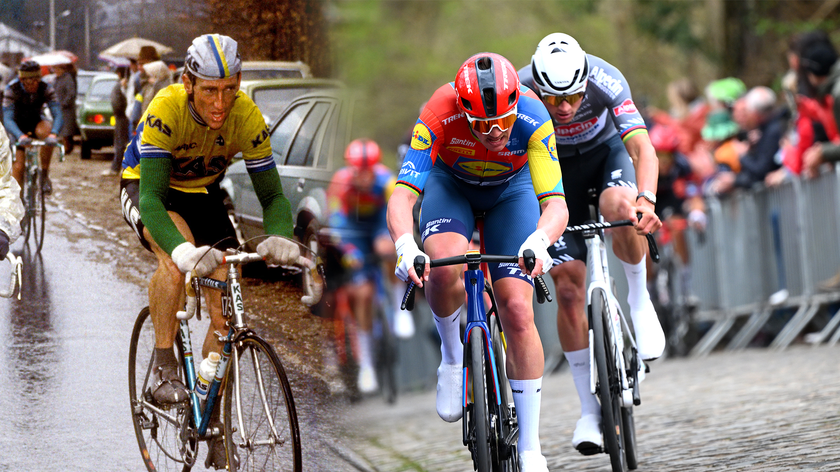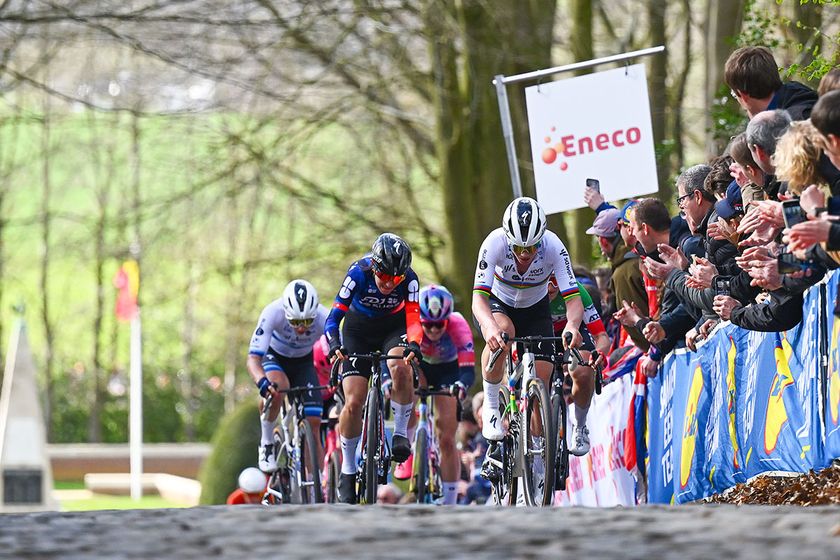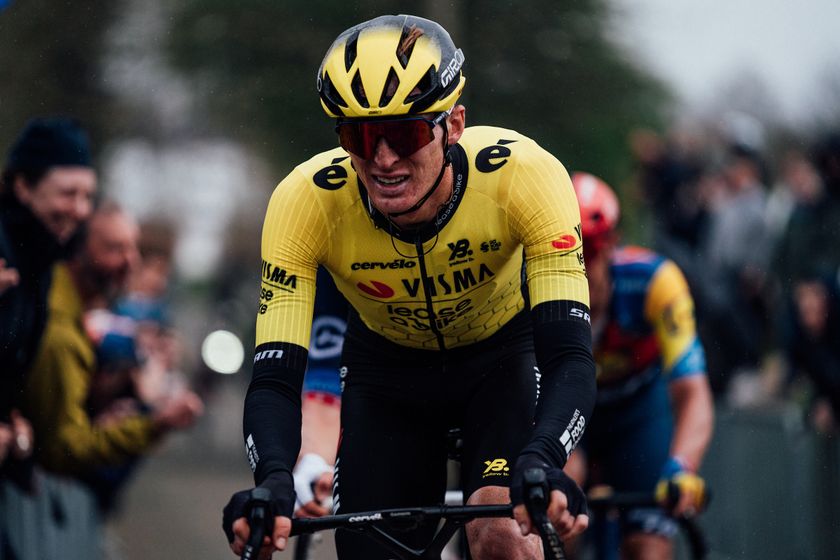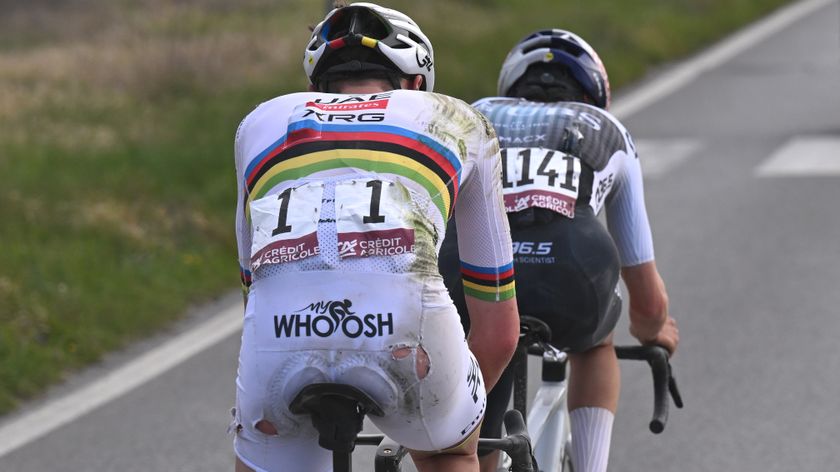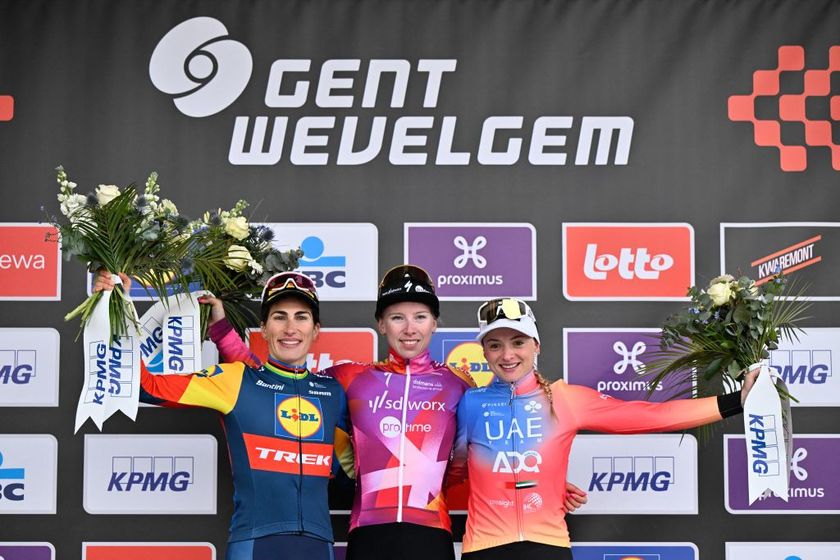Fitness questions and answers for June 24, 2008
Got a question about fitness, training, recovery from injury or a related subject? Drop us a line at...
Form & Fitness Q & A
Got a question about fitness, training, recovery from injury or a related subject? Drop us a line at fitness@cyclingnews.com. Please include as much information about yourself as possible, including your age, sex, and type of racing or riding. Due to the volume of questions we receive, we regret that we are unable to answer them all.
Carrie Cheadle, MA (www.carriecheadle.com) is a Sports Psychology consultant who has dedicated her career to helping athletes of all ages and abilities perform to their potential. Carrie specialises in working with cyclists, in disciplines ranging from track racing to mountain biking. She holds a bachelors degree in Psychology from Sonoma State University as well as a masters degree in Sport Psychology from John F. Kennedy University.
Jon Heidemann (www.peaktopeaktraining.com) is a USAC Elite Certified cycling coach with a BA in Health Sciences from the University of Wyoming. The 2001 Masters National Road Champion has competed at the Elite level nationally and internationally for over 14 years. As co-owner of Peak to Peak Training Systems, Jon has helped athletes of all ages earn over 84 podium medals at National & World Championship events during the past 8 years.
Dave Palese (www.davepalese.com) is a USA Cycling licensed coach and masters' class road racer with 16 years' race experience. He coaches racers and riders of all abilities from his home in southern Maine, USA, where he lives with his wife Sheryl, daughter Molly, and two cats, Miranda and Mu-Mu.
Kelby Bethards, MD received a Bachelor of Science in Electrical Engineering from Iowa State University (1994) before obtaining an M.D. from the University of Iowa College of Medicine in 2000. Has been a racing cyclist 'on and off' for 20 years, and when time allows, he races Cat 3 and 35+. He is a team physician for two local Ft Collins, CO, teams, and currently works Family Practice in multiple settings: rural, urgent care, inpatient and the like.
Fiona Lockhart (www.trainright.com) is a USA Cycling Expert Coach, and holds certifications from USA Weightlifting (Sports Performance Coach), the National Strength and Conditioning Association (Certified Strength and Conditioning Coach), and the National Academy for Sports Nutrition (Primary Sports Nutritionist). She is the Sports Science Editor for Carmichael Training Systems, and has been working in the strength and conditioning and endurance sports fields for over 10 years; she's also a competitive mountain biker.
Eddie Monnier (www.velo-fit.com) is a USA Cycling certified Elite Coach and a Category II racer. He holds undergraduate degrees in anthropology (with departmental honors) and philosophy from Emory University and an MBA from The Wharton School of Business.
Get The Leadout Newsletter
The latest race content, interviews, features, reviews and expert buying guides, direct to your inbox!
Eddie is a proponent of training with power. He coaches cyclists (track, road and mountain bike) of all abilities and with wide ranging goals (with and without power meters). He uses internet tools to coach riders from any geography.
David Fleckenstein, MPT (www.physiopt.com) is a physical therapist practicing in Boise, ID. His clients have included World and U.S. champions, Olympic athletes and numerous professional athletes. He received his B.S. in Biology/Genetics from Penn State and his Master's degree in Physical Therapy from Emory University. He specializes in manual medicine treatment and specific retraining of spine and joint stabilization musculature. He is a former Cat I road racer and Expert mountain biker.
Since 1986 Steve Hogg (www.cyclefitcentre.com) has owned and operated Pedal Pushers, a cycle shop specialising in rider positioning and custom bicycles. In that time he has positioned riders from all cycling disciplines and of all levels of ability with every concievable cycling problem. Clients range from recreational riders and riders with disabilities to World and National champions.
Current riders that Steve has positioned include Davitamon-Lotto's Nick Gates, Discovery's Hayden Roulston, National Road Series champion, Jessica Ridder and National and State Time Trial champion, Peter Milostic.
Pamela Hinton has a bachelor's degree in Molecular Biology and a doctoral degree in Nutritional Sciences, both from the University of Wisconsin-Madison. She did postdoctoral training at Cornell University and is now an assistant professor of Nutritional Sciences at the University of Missouri-Columbia where she studies the effects of iron deficiency on adaptations to endurance training and the consequences of exercise-associated changes in menstrual function on bone health.
Pam was an All-American in track while at the UW. She started cycling competitively in 2003 and is the defending Missouri State Road Champion. Pam writes a nutrition column for Giana Roberge's Team Speed Queen Newsletter.
Dario Fredrick (www.wholeathlete.com) is an exercise physiologist and head coach for Whole Athlete™. He is a former category 1 & semi-pro MTB racer. Dario holds a masters degree in exercise science and a bachelors in sport psychology.
Scott Saifer (www.wenzelcoaching.com) has a Masters Degree in exercise physiology and sports psychology and has personally coached over 300 athletes of all levels in his 10 years of coaching with Wenzel Coaching.
Kendra Wenzel (www.wenzelcoaching.com) is a head coach with Wenzel Coaching with 17 years of racing and coaching experience and is coauthor of the book Bike Racing 101.
Steve Owens (www.coloradopremiertraining.com) is a USA Cycling certified coach, exercise physiologist and owner of Colorado Premier Training. Steve has worked with both the United States Olympic Committee and Guatemalan Olympic Committee as an Exercise Physiologist. He holds a B.S. in Exercise & Sports Science and currently works with multiple national champions, professionals and World Cup level cyclists.
Through his highly customized online training format, Steve and his handpicked team of coaches at Colorado Premier Training work with cyclists and multisport athletes around the world.
Richard Stern (www.cyclecoach.com) is Head Coach of Richard Stern Training, a Level 3 Coach with the Association of British Cycling Coaches, a Sports Scientist, and a writer. He has been professionally coaching cyclists and triathletes since 1998 at all levels from professional to recreational. He is a leading expert in coaching with power output and all power meters. Richard has been a competitive cyclist for 20 years
Andy Bloomer (www.cyclecoach.com) is an Associate Coach and sport scientist with Richard Stern Training. He is a member of the Association of British Cycling Coaches (ABCC) and a member of the British Association of Sport and Exercise Sciences (BASES). In his role as Exercise Physiologist at Staffordshire University Sports Performance Centre, he has conducted physiological testing and offered training and coaching advice to athletes from all sports for the past 4 years. Andy has been a competitive cyclist for many years.
Michael Smartt (www.wholeathlete.com) is an Associate Coach with Whole Athlete™. He holds a Masters degree in exercise physiology, is a USA Cycling Level I (Elite) Coach and is certified by the NSCA (Certified Strength and Conditioning Specialist). Michael has more than 10 years competitive experience, primarily on the road, but also in cross and mountain biking. He is currently focused on coaching road cyclists from Jr. to elite levels, but also advises triathletes and Paralympians. Michael is a strong advocate of training with power and has over 5 years experience with the use and analysis of power meters. Michael also spent the 2007 season as the Team Coach for the Value Act Capital Women's Cycling Team.
Earl Zimmermann (www.wenzelcoaching.com) has over 12 years of racing experience and is a USA Cycling Level II Coach. He brings a wealth of personal competitive experience to his clients. He coaches athletes from beginner to elite in various disciplines including road and track cycling, running and triathlon.
Advice presented in Cyclingnews' fitness pages is provided for educational purposes only and is not intended to be specific advice for individual athletes. If you follow the educational information found on Cyclingnews, you do so at your own risk. You should consult with your physician before beginning any exercise program.
Achilles/heal issues
Bad hammies
Foot position
Lose of power during rides
Pulmonary effects of cycling in cities
Lose of appetite
Winter training
Achilles/heal issues
I am a 39 year old male, 82 kg, and have been cycling for about a year. For the first 3 months it was nothing more than a weekend ride, but since then I have gotten hooked, joined a club and increased the ride durations to usually 3 rides a week (for the last 6 months).
I don't complete the exact same rides week after week but in general a criterium on Saturday (or similar ride) long easy ride Sunday and club training Wednesday morning (usually 30 minutes of pace line then one outs/2 outs/drills or similar). I also play squash on a Friday, which I have been doing for 5 years now. I have always been active in life playing sports of some degree.
It started about a month ago - I noticed when I did a straight legged calf stretch, I felt a 'pulling' sensation in the area where the Achilles tendon meets the heel (assuming it goes that far?). If you viewed the lower leg and foot as a 90 degree angle, the point of issue would be right on the corner. I don't get the sensation on a bent leg calf stretch. Also I do not feel this sensation cycling or playing squash, only when I do that particular stretch.
It doesn't really hurt when I stretch, but as it certainly doesn't feel right, I am concerned I could be on the verge of tearing something, so I stretch a lot - which hasn't helped. I get it a little more intense on the left side, but generally equally on both heels. So far nothing has changed - no better no worse. I have tried to think of anything I have done different over the last 6 months (shoes, types of rides, intensity, bike set up etc), but nothing comes to mind. The only thing is I have been riding in the drops more often, but this has still been comfortable.
Shawn Kristofer
Steve Hogg replies:
Either your seat is too high or more likely; your cleats are too far forward. What is your cleat position in the sense of where is the centre of the ball of the foot relative to the centre of the pedal axle? What brand, model and size of shoes do you use? What pedal system do you use?
Shawn Kristofer replies:
I use size 43 Garneau Ergoair (with the single velcro strap over the top securing the shoe - when I bought them, I planned on doing more Tris). I have the cleats all the way back on the shoe (towards to heal), with no more room to move them. I did the exercise of marking the ball of the foot with a pen on the shoe and try to align with the spindle, but felt after several weeks, my foot still felt too far back from the spindle, too much ball of the foot (the exercise positioned the cleat about mid point). I use Shimano PD R540 with the yellow cleats.
Looking back in my notes, I did raise my seat maybe 1-2 mm probably 3 months ago (as my quads were burning out before anything else - the change seemed to help, and everything felt good), but that was well before the issues arose.
One thing I didn't mention though, I just completed a criterium yesterday, and finished with the lead group for the first time. Needless to say I had to push myself harder than before to be there. In the last turn, 400m out, the sprint started and I stood up in the drops and sprinted. About 200m out I experienced a massive cramp in the top inside of my right calf, and shortly after in the left. Strange as I don't usually cramp. I didn't mention this before as I assumed it was the result of going harder than ever before, plus the 'pulling' sensation in my heal has been around for a good month - but may be related?
Steve Hogg replies:
Seat height may play a part in your problem but I would be betting on cleat position being the major culprit. I don't see a lot of Louis Garneau shoes as they aren't a big seller in Oz, but of the dozen or so people I have fitted who have had Garneaus, in every instance I had to change the shoes or go to Speedplays with the alternative baseplate (part no 13330) to get enough foot over the pedal.
Bad Hammies
I'm a 43 year old everything cyclist and triathlete, 6'1'' and 165 lbs. During my tri last week, I came off the bike with brutal cramps in my right hamstring that disappeared within 1k of the run session.
For a good 5 minutes I had doubts about even continuing the race. This is not OK. Within the last 3 weeks I have raised my saddle on all 4 bikes to a 25 degree bend from a 30, which was about a 1cm change in height. All road and mountain bikes have a saddle set at 9.5cm behind the bottom bracket with the TT bike 4cm behind.
I did a hard ride on the TT bike yesterday, the first on this bike since the fateful race last weekend, and the cramping started again. I have ridden the road and mountain bike several times and have had no sign of troubles. The problem clearly is this bike. The only other notable is I have changed my pedal stroke to more of a raised heal throughout the stroke and I can feel I'm pawing back a bit more through the 6 o'clock position using some more of the hams. I'm stressed out and need help soon.
Paul
Steve Hogg replies:
The problem is likely to be simple. Your road and mountain bikes give you no problem with an included knee angle of 25 degrees at the bottom of the pedal stroke while the tri bike does. Much as I hate to talk in terms on included knee angles, the same 25 degree included knee angle on all 3 bikes implies that all 3 bikes have the same 'effective seat height'.
Paul replies:
Hey there Steve, first I'll satisfy your curiosity. Every Monday I do isolated leg training on my rollers (an adventure in itself involving some serious furniture collision). Several weeks ago I noticed I could keep a smoother pedal stroke with less fatigue if I elevated my heel slightly throughout the stroke. So I applied that out on the road and it felt good. However, my seat felt low when my heel was raised, therefore the increased saddle height.
I realize the middle of the season is the perfect time to mess with my position...sarcasm. Anyway, taking your advice I dropped the saddle back down to where it used to be and took the TT bike out for my hill repeat session. The first thing I did instinctively was drop my heal more through the 3 o'clock and it felt great. Interestingly, when I lifted the heel in the middle of a mind numbing effort; I could feel my hammy getting irritated. Hmmmm.
When I dropped it again, the irritation stopped. To confuse the issue one better, I actually moved the saddle forward 1 cm before my last set of intervals and it felt great. Upon getting home I took a saddle height measurement and realized my saddle was now 5 mm lower than when I started this whole mess. It now makes me want to lower all of my saddles 5 mm. I now have a headache. Thanks for your help Steve! You definitely helped me. I just want to know, were you against the whole raised heal thing?
Steve Hogg replies:
If by "isolated leg training" you mean single legged pedaling, then you need to understand that a technique that allows you to pedal more smoothly with only one leg clipped in doesn't have a lot of relevance to whatever technique allows you to pedal smoothly with both feet clipped in.
Foot position
I have a question of foot position on pedals.
I have recently changed my road shoes and have started to get numbness in my toes the only reason I can think of is my foot position on the pedal is wrong and was curious whether you had any guidance on how to get the correct position.
If it helps at all, I wear Shimano R220 shoes with Shimano Ultegra SL 6620 pedals.
Keith
Eddie Monnier replies:
Keith - can you be more specific:
Keith replies:
- Which toes? All of them
- Both feet? Yes
- How long into the ride? Generally about 1 hour
- Does it happen consistently? Yes
- Did you change shoes only, or pedals, too? Shoes only
- How were the new cleats set up (i.e., did you do it, did somebody else, were the old shoes used as reference?) Someone in the store measured my feet and positioned my feet on the pedals.
Eddie Monnier replies:
If all of your toes are numb on both feet, my first inclination would be the fit of the new shoe. Perhaps the toe box is too narrow, the shoe is too small, and/or your cinching the lower straps too tightly (unlikely given you've been riding for a while).
Scott Saifer replies:
Toe numbness can be caused by shoes that are too tight across the toes or mid-foot of course, but you are correct that cleat position can also play a role. In particular, if the cleats are too close to the toe, you may be curling your toes and driving them into the sole of the shoe as you "claw" for power.
Lose of power during rides
have been recreationally riding for a number of years generally doing 60ish miles a week of various intensities, and recently I was invited to have a lactate & max power test done as part of a school demonstration.
The results of interest are:
Lactate Threshold wattage: 225
Lactate Threshold HR (bpm): 164
Lactate Threshold (HIa): 4.7
Max HR in test (bpm): 196
1 minute max test (watts): 350
Recently I have started to push further and faster with my rides in an effort to keep up with a friend. The result is that after 28-35 miles at a reasonable pace (HR about 150-160) my legs tire and my heart rate rises with a significant loss of power although I am not able to measure this without a power meter.
I initially thought that my body had simply depleted its reserve of carbohydrates and therefore I started using a sports drink with carbohydrates and electrolytes. The results of this were not dramatic but did mean I was better for longer, although nothing dramatic.
However, still after a couple of hours riding my heart rate can be well above 160 on average whilst producing a cycling speed at least 20% less of earlier in the ride (therefore power significantly less). I've tried giving myself recover periods in the ride of 10 minutes or so at HR120 but as soon as I begin to work again my HR goes up without any significant increase in power.
Is there something I'm missing or is my body simply not good enough or fit enough to handle it?
Ryan
Scott Saifer replies:
Very briefly and simplifying dramatically, when you ride near your LT power, you fatigue rapidly. You can delay the fatigue on any given day with good nutrition and hydration; by spinning a higher cadence in a lighter gear and riding in an aerodynamically efficient position, but sooner or later, you're going to lose power or have to ride at higher heart rates to maintain close to the same power. The only cure is to boost your LT power with an aerobic base training program.
Pulmonary effects of cycling in cities
I'm a 32-year old cyclist living in Los Angeles. I've been cycling for two years and before that ran marathons. I commute 10-miles each way to work and use these sessions as training. I also cycle 3-5 hours on the weekends. My commute takes me from a neighbourhood near Griffith Park (for anyone not familiar with SoCal, it's the enormous mountainous park near downtown), through the park, and then for 4 miles along a road parallel to the highway.
I've been doing this about two to three times per week for a year. I'm concerned about the long term health of my lungs and heart from inhaling pollution. My question: is it better for my health if I stop commuting by bike, start driving to work (gas prices be damned), and take indoor spin classes during the week, limiting my outdoor riding to the mornings on the weekends?
The issue concerns me because I plan to live in LA for many years and would like to keep cycling. What advice can you give for cyclists in polluted big cities?
Peter McDonnell
Scott Saifer replies:
Ozone and particulates from car and truck exhaust definitely cause many lung health problems from short term impairment of lung function to cancer and emphysema. If commuting necessarily means riding along a busy freeway, you'd probably improve your long term health more by doing as you've suggested (riding indoors on weekdays and outdoors only at low-traffic times) than by continuing to train as you are currently.
Lose of appetite
I am a 17 year-old junior cyclist who rides between 11 and 16 hours a week. Just recently I have noticed a complete drop in my appetite and have lost my hunger completely. In the past, this has never been the case for when I would ride more, I would gain a hearty appetite, as any normal person would. I never feel hungry, but rather feel sluggish, tired, and grumpy when I do not eat. Any suggestions why this may be occurring or what I can do to increase my appetite? Thanks so much!
Puzzled Junior
Scott Saifer replies:
Loss of appetite combined with fatigue and grumpiness is a classic sign of overtraining, or of training in the heat. If you lose your appetite for just a few hours after training, just make a habit of forcing yourself to take a carbohydrate drink post ride and then eating when your appetite returns. If you are losing your appetite 24x7, you are probably overtrained. The best thing would be to consult with an experienced coach to confirm the diagnosis before taking drastic action, but if you are in fact overtrained, the corrective action is to back way, way off on your training, doing nothing but shorter endurance (70-80% of max heart rate) and recovery (60-70% of maximum heart rate) rides until your appetite comes back.
Winter training
Its winter here now in Australia, which means a little spell indoors on the trainer. I want to try some gym strengthening work this year, what exercises can you suggest to build muscle strength?
Mark Richards
Scott Saifer replies:
I'm going to assume you mean muscular strength that will benefit your cycling. Here's the selection of exercises I commonly recommend:
